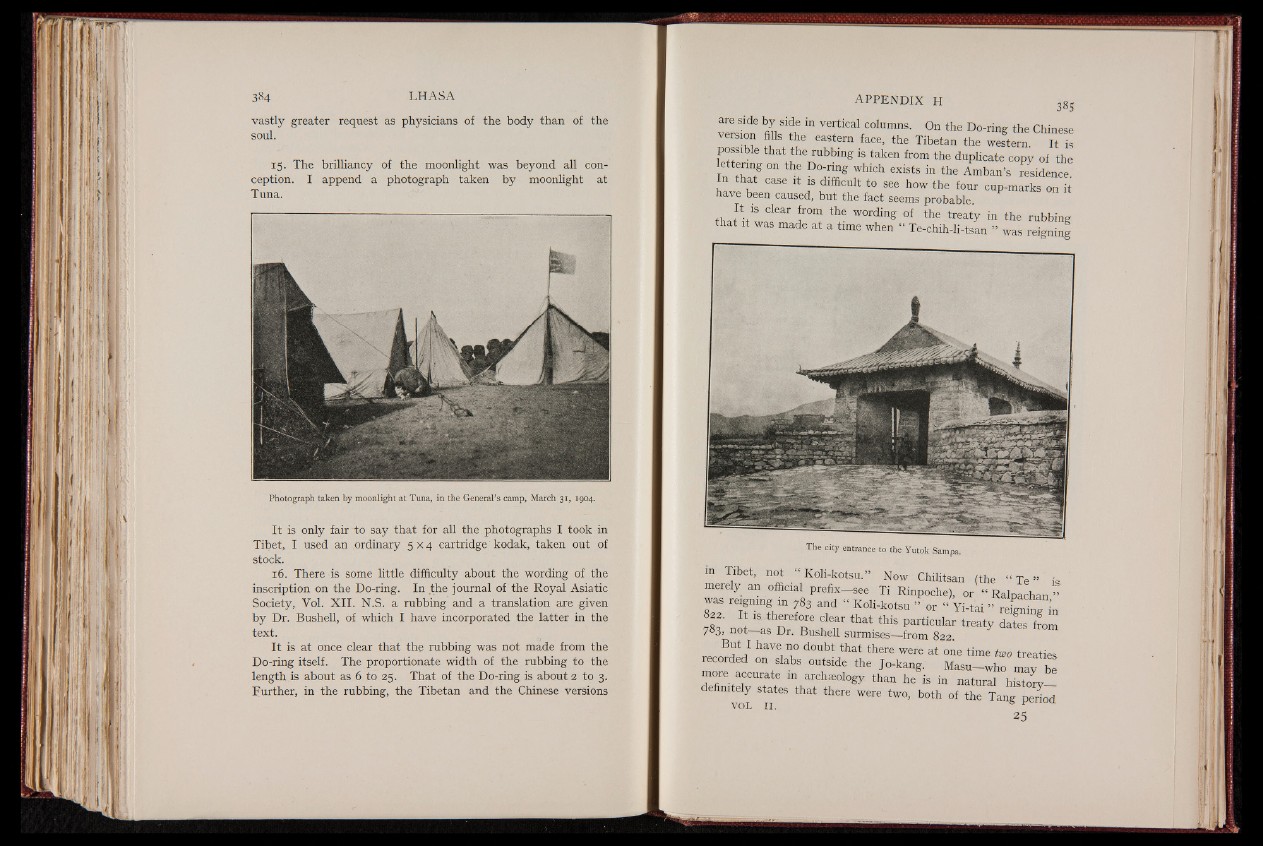
vastly greater request as physicians of the body than of the
soul.
15. The brilliancy of the moonlight was beyond all conception.
I append a photograph taken by moonlight at
Tuna.
Photograph taken by moonlight at Tuna, in the General’s camp, March 31, 1904.
It is only fair to say that for all the photographs I took in
Tibet, I used an ordinary 5x4 cartridge kodak, taken out of
stock.
16. There is some little difficulty about the wording of the
inscription on the Do-ring. In the journal of the Royal Asiatic
Society, Vol. X II. N.S. a rubbing and a translation are given
by Dr. Bushell, of which I have incorporated the latter in the
text.
It is at once clear that the rubbing was not made from the
Do-ring itself. The proportionate width of the rubbing to the
length is about as 6 to 25. That of the Do-ring is about 2 to 3.
Further, in the rubbing, the Tibetan and the Chinese versions
A P P E N D I X H
are side by side m vertical columns. On the Do-ring the Chinese
version fills the eastern face, the Tibetan the western. It is
possible that the rubbing is taken from the duplicate copy of the
lettering on the Do-nng which exists in the Amban’s residence
In that case it is difficult to see how the four cup-marks on it
have been caused, but the fact seems probable.
WKBffl Clear j ro™ the wording of the treaty in the rubbing
that it was made at a time when “ Te-chih-li-tsan ” was reigning
The city entrance to the Yutok Sampa.
m Tibet, not “ Koli-kotsu.” Now Chilitsan (the “ Te ” is.
merely an official prefix-see Ti Rinpoche), or “ Ralpachan 1
was reigning m 783 and “ Koli-kotsu ” or “ Yi-tai ” refrnW in
■ B B S W ■ H th i s P a r t i c u la r *eaty dates from
703, not as Dr. Bushell surmises—from 822
H have no doubt that there were at one time two treaties
recorded on slabs outside the Jo-kang. Masu-who may be
more accurate m archeology than he is in natural history-
definitely states that there were two, both of the Tang period
VOL 1 1. 6 F
2S